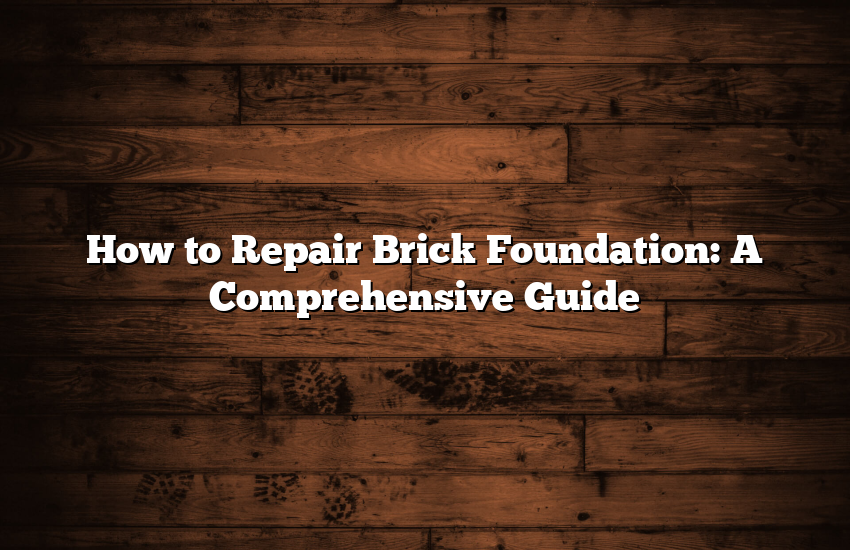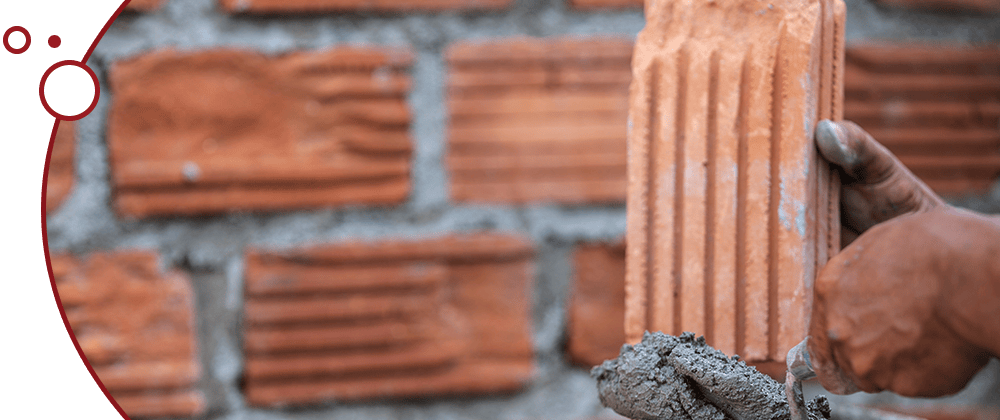
When it comes to maintaining the structural integrity of your home, understanding “how to repair brick foundation” is paramount. Brick foundations, while robust and durable, are susceptible to various forms of damage over time. This comprehensive guide delves into the nuances of identifying, preparing for, and executing brick foundation repairs. It offers homeowners essential insights into recognizing early signs of damage, choosing the right repair methods, and undertaking the repair process with precision and safety.
Table of Contents
Understanding Brick Foundation Damage
Brick foundations, renowned for their durability and strength, nonetheless can succumb to damage over time. Environmental factors, soil movement, and water are the main culprits behind the deterioration of these structures. It’s crucial to recognize that while bricks and mortar can last for decades, they are not invulnerable to the relentless forces of nature. The key to preserving the integrity of a brick foundation is early detection of any signs of damage, as this can thwart the progression to more severe structural issues.
Common Causes of Damage
The primary causes leading to brick foundation damage include:
- Soil Settling: Over time, the soil under and around the foundation can settle or shift, leading to uneven support and stress on the brickwork.
- Excessive Moisture: Water is a major adversary of brick foundations. Excessive moisture from rain, flooding, or even poor drainage can erode the mortar and weaken the structure.
- Temperature Fluctuations: Repeated expansion and contraction of the materials due to temperature changes can create cracks and weaken the foundation over time.
Understanding these causes is pivotal in determining the most effective repair strategy and in preventing future damage.
Signs of Foundation Damage
Early identification of foundation issues can simplify repairs and reduce costs. Key indicators of damage include:
- Visible Cracks: Small cracks can quickly evolve into larger, more problematic fissures.
- Uneven Floors: A telltale sign of foundation issues is when floors begin to slope or become uneven.
- Doors and Windows Issues: Difficulty in opening or closing doors and windows can indicate shifts in the foundation.
Preparing for Repair
Before embarking on the repair process, it’s essential to assemble the necessary tools and materials. This includes mortar mix, matching bricks, a chisel, a hammer, and appropriate safety equipment. The preparation phase also involves cleaning the damaged area and meticulously removing any loose or damaged bricks, ensuring a stable working area.
Safety First
Safety should be the foremost concern when undertaking foundation repairs. Protective gear such as gloves, goggles, and a hard hat are essential. Additionally, ensuring that the work area is stable and secure is crucial to prevent accidents.
Step-by-Step Repair Process
The repair process of a brick foundation involves several meticulous steps:
Removing Damaged Bricks
The first step is to carefully remove the damaged bricks. This task requires precision to avoid further destabilizing the structure. Using a chisel and hammer, gently extract the bricks and clear out the old mortar.
Preparing New Bricks and Mortar
Select replacement bricks that closely match the original in size, color, and texture. Mixing the mortar according to the manufacturer’s instructions is critical for achieving a durable repair.
Rebuilding the Foundation
Lay the new bricks carefully, applying mortar both horizontally and vertically. This ensures a strong and lasting bond. The placement should be done meticulously to maintain the alignment and stability of the foundation.
Finishing Touches and Cleanup
After the repairs are complete, it’s important to clean the area and apply any necessary finishing touches, such as sealing the new mortar. This helps protect the repair from environmental elements and future damage.
Maintaining Your Brick Foundation
Regular maintenance is crucial for the longevity of a brick foundation. Routine inspections for cracks, ensuring proper drainage, and addressing minor issues promptly can greatly extend the life of the foundation.
When to Call a Professional
While minor repairs can often be handled by a homeowner, significant foundation problems should be addressed by a professional. Knowing when to seek professional help can save both time and money in the long run, ensuring the repairs are done correctly and safely.
Conclusion
In conclusion, repairing a brick foundation requires careful attention to detail, understanding of the materials and processes involved, and a commitment to regular maintenance. This guide aims to empower homeowners with the knowledge needed to address foundation issues effectively. Remember, while minor repairs can be a DIY project, significant issues should be entrusted to professionals. Regular inspection and timely intervention are key to ensuring the longevity and safety of your brick foundation.
FAQs
Q: How can I tell if my brick foundation needs repairs?
A: Signs like visible cracks, uneven floors, or doors that don’t close properly are indicators that your brick foundation may need attention.
Q: Is it safe to repair a brick foundation myself?
A: For minor repairs, a DIY approach can be safe if you have the right tools and knowledge. However, for extensive damage, it’s advisable to consult a professional.
Q: What are the common causes of brick foundation damage?
A: The most common causes include soil settling, excessive moisture, and temperature fluctuations impacting the structural integrity of the foundation.
Q: How often should I inspect my brick foundation for damage?
A: Conducting a thorough inspection annually, especially after extreme weather conditions, is recommended to maintain foundation health.
Q: What should I do if I find significant damage to my brick foundation?
A: If significant damage is discovered, it’s best to contact a professional for a comprehensive evaluation and repair to ensure the safety and integrity of your home.


